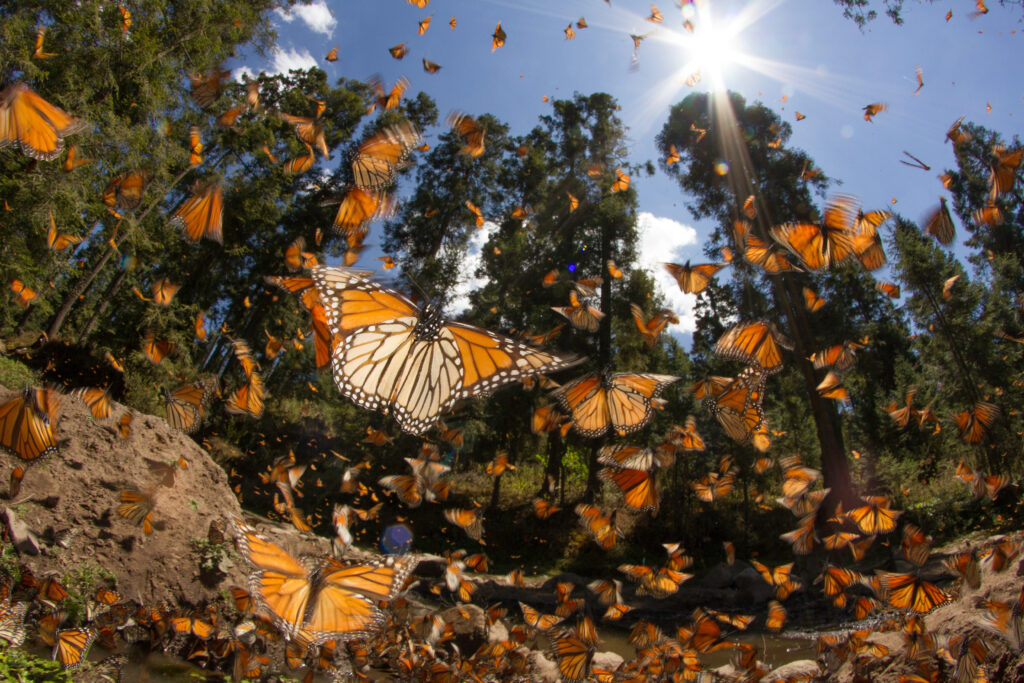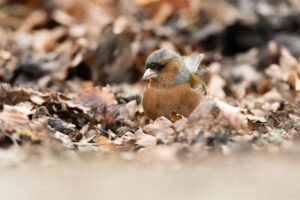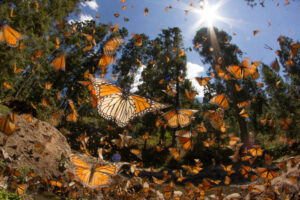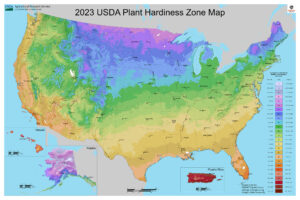
In our previous post, “Got Milkweed?”, we encouraged gardeners to embrace monarchs by planting native milkweed species—such as swamp, common, or butterfly milkweed—alongside plenty of nectar-rich flowers, natural shelter, and a reliable water source. Even a small 200‑sq‑ft pollinator garden (or half that!) can become a certified Monarch Waystation—a heartfelt invitation for these winged travelers to visit year after year.
A Spark of Hope: Eastern Monarchs Nearly Double Their Territory
In a truly encouraging development, the eastern monarch butterfly population—measured by the area they occupy in Mexico during winter—has almost doubled in 2025, increasing from about 0.9 hectares in December 2023 to approximately 1.79 hectares in December 2024. While still below long-term historical levels, this rebound is a hopeful sign that habitat conservation efforts may be making a difference—even if the journey ahead remains long.
Why This Win Isn’t the End of the Story
Despite the encouraging eastern numbers, monarchs face serious challenges:
- Population collapse in the West: Western monarch communities have plummeted by nearly 99% over recent decades—heightening fears that this population may vanish entirely by 2080. National Wildlife Federation, Animalko, Butterfly Utopia
- Pesticide-related die-offs: A study in early 2024 documented a mass die-off of monarchs near California’s Pacific Grove. The culprits: multiple neurotoxic pesticide residues (especially pyrethroids) found in every tested butterfly. These findings underscore the lethal threat of pesticide exposure during vulnerable life stages.
- Warming fall climates confuse their internal compass: Research has revealed that monarchs rely on geomagnetic cues to guide their spring migrations—but warmer winter temperatures may disrupt the “recalibration” process that sets their compass. This could leave them heading south instead of north when spring arrives.
- Skewed survival rates in the wild: In many areas, survival is alarmingly low. For example, in Oregon, only about 5% of monarch eggs typically survive.
- A “catastrophic” decline across U.S. butterfly populations: A sweeping study revealed a staggering 22% decline in overall butterfly numbers across the U.S., with 107 out of 342 species losing more than half their populations. Monarchs are among those most severely impacted, with drops of 80% in the east and over 95% in the west. People.com
You Can Help: From Your Backyard to Global Impact
Plant Milkweed (and do it now!) Milkweed remains absolutely vital—it’s the only host plant for monarch caterpillars. Experts recommend species like swamp milkweed (Asclepias incarnata) for damp areas and butterfly weed (Asclepias tuberosa) for sunny, dry spots. These hardy plants are low-maintenance, support monarchs, deter deer, and attract various pollinators. A patch or two can be life-saving.
Skip the Pesticides. Suburban and residential pesticide use, particularly during overwintering periods, poses a lethal risk to monarchs. Whenever possible, avoid applying neurotoxic chemicals and choose more butterfly-friendly pest-management options.
Create a Monarch Waystation. If your garden qualifies (even at 100 square feet), consider becoming a certified Monarch Waystation. Monarch Watch provides a way to register your habitat and even offers free milkweed plugs to schools and nonprofits.
Support Broader Conservation Efforts. Forest conservation in Mexico, legislative protections, and urban habitat initiatives like Project Monarch in Chicago are vital front-line actions. The U.S. has also seen proposed protections under the Endangered Species Act, as well as community programs like the Mayors’ Monarch Pledge that help scale up monarch-friendly actions.
Share Your Success Stories. Individuals can make big impacts. For example, take Martha Coleman from Portland, whose garden became a monarch sanctuary, inspiring others in her neighborhood to take up the cause. Axios
A Flight Path Forward
Here’s what monarchs need to thrive—and how you can help:
- Plant Milkweed & Nectar Flowers
- TO DO: Add native milkweed and diverse blooms
- WHY? Provides critical habitat and food for all monarch life stages
- Avoid Pesticides
- TO DO: Use natural pest control in your garden
- WHY? Reduces lethal risks like pesticide poisoning and neurotoxic exposure
- Create Wildlife Corridors
- TO DO: Help connect habitats across landscapes
- WHY? Ensures migratory success and genetic diversity
- Support Conservation Policy
- TO DO: Engage with programs and advocate for protections
- WHY? Ensures long-term species survival at larger scales
- Share & Educate
- TO DO: Tell your story, host a garden walk, or involve schools
- WHY? Inspires community action and collective stewardship
Final Thoughts
Monarchs remain one of nature’s most beloved emissaries—symbols of migration, resilience, and transformation. While challenges for monarchs remain undeniable — from catastrophic declines to climate disruptions —2025 has also brought signs of hope and awareness. Your garden, your decisions, and your passion can help shape a brighter future for these magnificent butterflies.
Let this stand as an invitation: revisit our “Got Milkweed?” tips, plant with purpose, garden with awareness, and carry the monarch story forward—one milkweed patch and one kind action at a time.
Further Reading & Resources
Eastern Monarch Population Count 2025 – Journey North; Monarch Butterfly Comeback – Palos Verdes Pulse; Monarchs on the Endangered Species List – Animalko; Monarch Butterflies Status 2025 – Butterfly Utopia; Mass Die-Off from Pesticide Exposure – The Guardian; Monarch Compass Study – Earth.com; Portland Monarch Survival Rates – Axios; Catastrophic Butterfly Decline – People; Butterfly Weed Growing Guide – Veranda; Monarch Watch – Wikipedia; Monarch Butterfly Migration – Wikipedia






